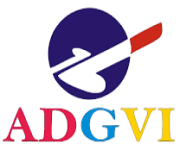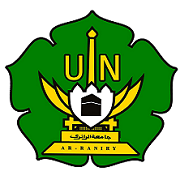The Evaluation of Project-Based Learning at the Mechanical Engineering Department, Polytechnic Malaysia: A Prosess Dimension Assessment
Abstract
Keywords
Full Text:
PDFReferences
Khaled Nordin M. Dari menara gading ke menara ilmu. Ministry of Higher Education. Putrajaya. 2013
Ramlee Mustapha, Abu Abdullah. Malaysia transition toward a knowledge-based economy. The Journal of Technology Studies, 30(3), 51 – 61. 2004
Knoll, M. The project method: its vocational education origin and international development. Journal of Industrial Teacher Education, 34(3), 59-80. 1997
Diaz, D.P, Cartnal, R.B. Students’ learning styles in two classes – online distance learning and equivalent on-campus. College Teaching, 47(4), 130-135. 1999
Blank, W. Authentic instruction. promising practices for connecting high school to the real world. Tampa, FL: University of South Florida. 1997
David, J.L. What research says about Project-Based Learning. Educational Leadership, 65(5), 80-82. 2008
Donnelly, R., Fitzmaurice, M. Collaborative Project-Based Learning and Problem-Based Learning in higher education: a consideration of learner-focused strategies. Emerging issues in the practice of university learning and teaching. 87-98. Dublin: AISHE/HEA. 2005
Karlin, M. Vianni N. Project-Based Learning. Medford, OR: Jackson Educational Service District. 2001
Hannas, W.C. The writing on the wall: how Asian orthography curbs creativity. Philadelphia: University of Pennsylvania Press. 2003
Kim, K.H. Learning from each other: Creativity in East Asian and American education. Creativity Research Journal, 17(4), 337-347. 2005
Lau, S., Hui, A.N.N.,Ng, G.Y.C. Creativity when east meets west. Singapore: World Scientific Publishing Company. 2004
Ng, A.K. Why Asians are less creative than Westerners? Singapore: Prentice-Hall. 1999
Ramlee Mustapha, Greenan, James. The role of vocational education in economic development in Malaysia: educators’ dan employers’ perspectives. Journal of Industrial Teachers, 39(2), 58-78. 2002
Zanifa M. Z. Malaysian government policies on human resources Developmet: Toward meeting the needs of the knowledge-based economy. Re-engineering dual training. The Malaysian Experience. GTZ & GMI Malaysia. 2007
Fong, C.O. Enhancing organizational effectiveness through superior human capital management. The National Human Resources Summit 2007. Crowne Plaza Mutiara Kuala Lumpur. 2007
Drucker, P.F. Management challenges for the 21st century. Amsterdam: Elsevier. 1999
Aruna Ismail. The development of a new Malaysian Skills Qualification Framework (MSQF) in the context of National Dual Training System (NDTS). Ph.D Thesis. Universiti Tun Hussein Onn Malaysia. 2013
Chia, W.M. Li, M.. Malaysia. Regional Outlook: Southeast Asia 2011-2012. Singapore: ISEAS. 2011
Malaysia. The Ninth Malaysia Plan, 2006-2010. Putrajaya: Economic Planning Unit, Prime Minister’s Department. 2006
Chew, Cheng Sim. Helping unemployed graduates in Malaysia. New Straits Times. 2013
Md. Baharuddin A. R., Azhar Khairul Mat Daud, Omar A. B., & Ismail, H. N. An application of Project Based Learning (PjBL) module. Elixir Social Studies Journal, 41, 5882-5885. 2011
Schneider, D. K. Project-based learning. Accessed on 2012. Edutech website. 2005
Grant, M. M. Getting a trip on Project-Based Learning: theory, cases and recommendations. Meridian A Middle School Computer Technologies Journal, 5. 2002.
Program, Intel. Tech. Benefit of Project-Based Learning. Accessed on April 1, 2013. Retrieved from Designing Effective Projects: Characteristics of Projects website: http://download.intel.com/education/Common/ro/Resources/DEP/projectdesign/DEP_pbl_research.pdf. 2007
El Kamoun, N., Bousmah, M., Aqqal, A. Virtual environment online for the Project-Based Learning session. Cyber Journals, (January Edition), 22-33. 2011
Andreas, Y. M., & Rogers, A. An introduction to networked Project-Based Learning. Accessed on April 1, 2013, retrieved from Global SchoolNet website: http://www.gsn.org/web/pbl/whatis.htm. 2000
Mergendoller, J. R. Thomas, J. W. Managing Project Based Learning: principles from the field. Accessed on 2012. Retrieved from The Buck Institute of Education website:http://www.bie.org/images/uploads/general/f6d0b4a5d9e37c0e0317acb7942d27b0.pdf. 2000
Buck Institute for Education. Why Project-Based Learning?. From www.bie.org/. 2011
Larmer, J., & Mergendoller, J. R. Seven essential for Project Based Learning. Accessed on April 2, 2013. Retrieved from Educational Leadership: http://www.ascd.org/publication/educational_leadership/sept10/vol68/num01/Seven_Essential_for_Project-Based_Learning.html. 2010
Krejcie, R. V. Morgan, D. W. Determining sample size for research activities. Educational and Psychological Measurement, 607-610. 1970
McAlpine, I., Reidsema, C., & Allen, B. Educational design and online support for an innovative Project-Based Course in engineering design. Proceedings of the 23rd Annual Ascilite Conference: Who's Learning? Whose Technology? 497-507). Ascilite: The University of Sydney. 2006
Kurzel, F., Rath, M. Project Based Learning and learning environments. Issues in Informing Science and Information Technology, 4, 503-510. 2007
Santana, A., Dias, T., Molinaro, L., Abdalla Jr, H. Experience implementing Project Based Learning in engineering with focus on soft skills acquisition. IEEE Multidisciplinary Engineering Education Magazine, 5(4), 27-34. 2010
DOI: http://dx.doi.org/10.22373/crc.v1i1.1383
Refbacks
- There are currently no refbacks.
Copyright (c) 2017 CIRCUIT: Jurnal Ilmiah Pendidikan Teknik Elektro
Circuit: Jurnal Ilmiah Pendidikan Teknik Elektro
P-ISSN 2549-3698
E-ISSN 2549-3701
Published by Electrical and Engineering Education Department, Education and Teacher Training Faculty, Universitas Islam Negeri Ar-Raniry Banda Aceh, Indonesia
Email: [email protected]

Creative Commons License
Circuit: Jurnal Ilmiah Pendidikan Teknik Elektro is licensed under a Creative Commons Attribution-ShareAlike 4.0 International License.
























